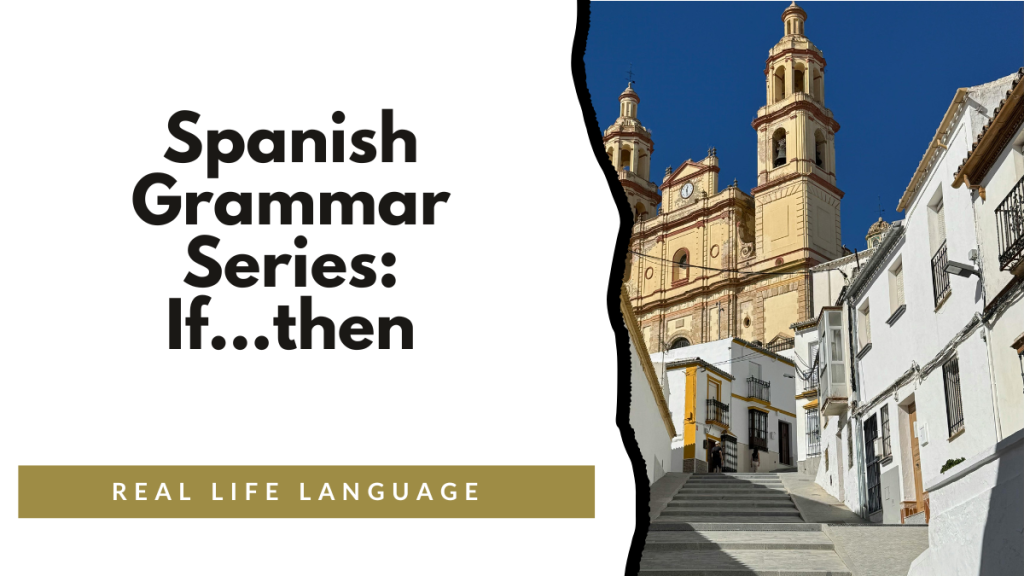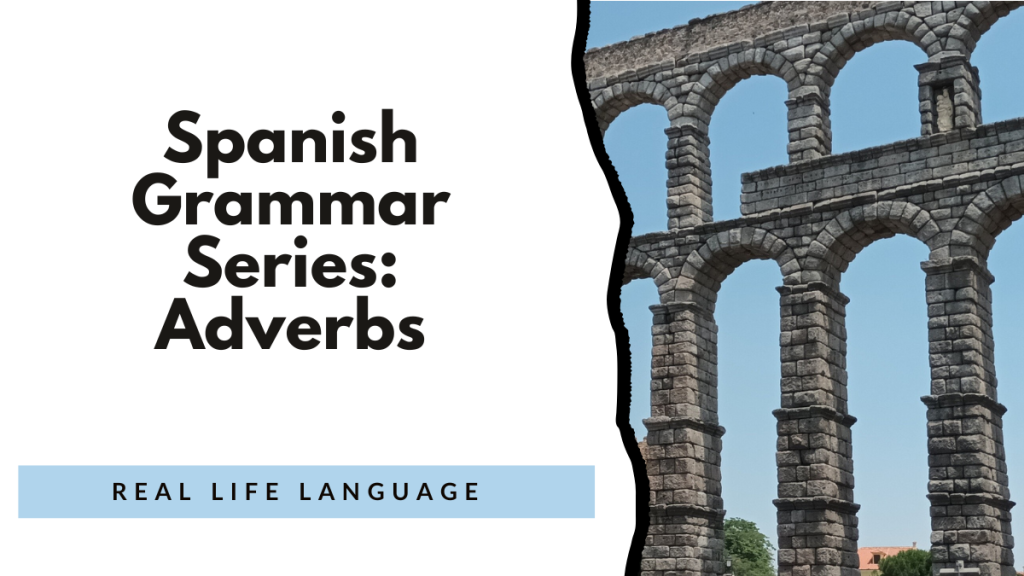Infinitive vs. Gerund in Spanish
(El Infinitivo vs. El Gerundio)
In Spanish, both the infinitive (hablar, comer, vivir) and the gerund (hablando, comiendo, viviendo) are non-conjugated verb forms, but they serve different grammatical purposes. While English often uses an “-ing” form for many situations, Spanish clearly separates when to use the infinitive and when to use the gerund. Understanding the distinction helps students choose the correct structure for actions, descriptions, and verb phrases.
(El Infinitivo vs. El Gerundio)
Both the infinitive (hablar, comer, vivir) and the gerund (hablando, comiendo, viviendo) are non-conjugated verb forms, but they are used in different grammatical situations.
English often uses “-ing” for both, but Spanish separates them clearly.
1) The Infinitive (El Infinitivo)
A. What It Is
The infinitive is the base form of a verb, the one you find in the dictionary:
hablar (to speak), comer (to eat), vivir (to live)
It usually means “to + verb” in English or can act like a noun in a sentence.
B. How It’s Used
| Function | Explanation | Example |
| 1. After prepositions | In Spanish, use the infinitive (not a conjugated verb) after any preposition. | Después de comer, voy al cine. → After eating, I go to the movies. Antes de salir, cierra la puerta. → Before leaving, close the door. |
| 2. As the subject of a sentence | The infinitive can act as a noun (the subject). | Fumar es malo para la salud. → Smoking is bad for your health. Viajar es divertido. → Traveling is fun. |
| 3. After another conjugated verb | Used when two verbs appear together (second stays in infinitive form). | Quiero estudiar español. → I want to study Spanish. Necesitamos salir pronto. → We need to leave soon. |
| 4. After impersonal expressions | Often follows hay que, es bueno, es importante, etc. | Es necesario dormir más. → It’s necessary to sleep more. Hay que practicar mucho. → One must practice a lot. |
| 5. After verbs of perception / motion | Common verbs like ver, oír, sentir, ir, venir, entrar, salir are followed by the infinitive. | Lo vi entrar. → I saw him enter. Salió correr. → He went out to run. |
| 6. As an object of prepositional phrases | Same as English gerunds (“after doing,” “by eating”), but use infinitive. | Al salir, cerró la puerta. → Upon leaving, he closed the door. Sin decir nada, se fue. → Without saying anything, he left. |
Tip: Whenever there’s a preposition before a verb (de, a, en, por, sin, para, con, al, etc.), use the infinitive!
C. Common Expressions with the Infinitive
| Expression | Example |
| tener que + infinitive | Tengo que estudiar. → I have to study. |
| deber + infinitive | Debes comer bien. → You should eat well. |
| poder + infinitive | Puedo ayudar. → I can help. |
| ir a + infinitive | Voy a trabajar. → I’m going to work. |
| acabar de + infinitive | Acabo de llegar. → I just arrived. |
| volver a + infinitive | Volvimos a intentar. → We tried again. |
2) The Gerund (El Gerundio)
A. What It Is
The gerund expresses an action in progress or describes how something is done — similar to “-ing” when it means doing something right now.
| Infinitive | Gerund | English |
| hablar | hablando | speaking |
| comer | comiendo | eating |
| vivir | viviendo | living |
| leer | leyendo | reading |
| decir | diciendo | saying |
| dormir | durmiendo | sleeping |
B. How It’s Used
| Function | Explanation | Example |
| 1. With estar to form the Present Progressive | Shows an action happening right now. | Estoy estudiando. → I’m studying. Ellos están trabajando. → They are working. |
| 2. With seguir / continuar / andar | Shows continuation of an action. | Sigo leyendo el libro. → I keep reading the book. Andan buscando trabajo. → They’re going around looking for work. |
| 3. To describe how an action is done (manner) | Explains how or by doing what. | Entró gritando. → He entered shouting. Aprendió español viviendo en México. → He learned Spanish by living in Mexico. |
| 4. To indicate simultaneous actions | Two actions happening at once. | Caminaba escuchando música. → She walked while listening to music. |
C. Never Use the Gerund:
Spanish does not use the gerund when English uses “-ing” as a noun or after a preposition. Use the infinitive instead.
| English / Wrong Spanish | Correct Spanish |
| Estoy interesado en aprendiendo español. | Estoy interesado en aprender español. |
| Después de comiendo, salgo. | Después de comer, salgo. |
| El fumar es malo. (Correct) | El fumando es malo. (Incorrect) |
The gerund cannot be the subject or object of a sentence in Spanish — only the infinitive can.
3) Formation of the Gerund
| Verb Type | Ending | Example |
| -ar verbs | -ando | hablar → hablando |
| -er verbs | -iendo | comer → comiendo |
| -ir verbs | -iendo | vivir → viviendo |
Irregular Gerunds
| Infinitive | Gerund | English |
| decir | diciendo | saying |
| pedir | pidiendo | asking |
| servir | sirviendo | serving |
| dormir | durmiendo | sleeping |
| morir | muriendo | dying |
| leer | leyendo | reading |
| traer | trayendo | bringing |
| ir | yendo | going |
| venir | viniendo | coming |
| poder | pudiendo | being able to |
4) Comparison: Infinitive vs. Gerund
| Use | Infinitive | Gerund |
| As subject | Fumar es peligroso. | Fumando es peligroso. |
| After preposition | Antes de salir. | Antes de saliendo. |
| After conjugated verb (quiere, debe, puede…) | Quiero comer. | Quiero comiendo. |
| With estar (action in progress) | Estoy estudiar. | Estoy estudiando. |
| To express “by doing” | Por hacer eso. | Hizo dinero trabajando. |
| To describe simultaneous actions | Camina escuchar música. | Camina escuchando música. |
5) Practice: Choose Infinitive or Gerund
- Estoy __________ (leer) un libro interesante.
- Quiero __________ (viajar) a España.
- Aprendió español __________ (vivir) en México.
- Después de __________ (comer), salimos.
- Ella sigue __________ (buscar) trabajo.
Answers:
- leyendo
- viajar
- viviendo
- comer
- buscando
6) Practice: Translate
- I’m studying right now.
- After eating, we go to the park.
- I want to learn Spanish.
- He learned by listening.
- Working is important.
Answers:
- Estoy estudiando ahora mismo.
- Después de comer, vamos al parque.
- Quiero aprender español.
- Aprendió escuchando.
- Trabajar es importante.
7) Quick Summary Chart
| Infinitive | Gerund |
| Dictionary form (-ar, -er, -ir) | -ando / -iendo form |
| Used after prepositions | Used after estar, seguir, etc. |
| Can be subject or object | Can’t be subject or object |
| Expresses purpose (“to…”) | Expresses ongoing action (“doing…”) |
| Examples: Antes de salir, Quiero comer | Examples: Estoy comiendo, Sigue hablando |
Why It Matters
Understanding when to use the infinitive vs. gerund helps learners:
- Avoid direct English translation errors
- Express actions in progress vs. general actions or goals correctly
- Sound natural when using progressive tenses, prepositional phrases, and verb combinations
- Achieve true fluency and grammatical precision
Building Proficiency for World Language Learners: 100+ High-Interest Activities
Discover over 100 dynamic activities to make world language learning interactive and fun. I wrote this book with some of my favorite activities for educators aiming to build proficiency with high-impact strategies.
Learn more and get your copy here.
5 Weeks of No and Low Prep Fun
Need quick, engaging activities for your class? This free guide includes 25 no-prep and low-prep ideas to save time while keeping students excited about learning.
Download your free copy now.
100s of videos to learn Spanish:

